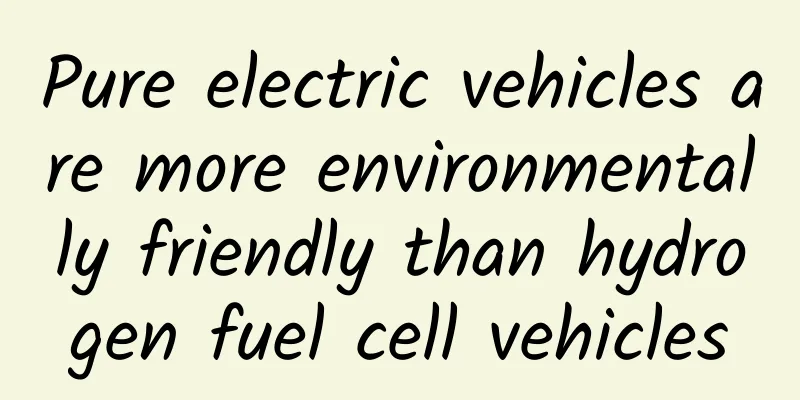[Popular Science of Chinese Military Technology] Why are helicopter engines so different from those of fixed-wing aircraft?
![[Popular Science of Chinese Military Technology] Why are helicopter engines so different from those of fixed-wing aircraft?](/upload/images/67f21d2ca93eb.webp)
|
As we all know, the power of aircraft flight comes from the engine. As the core component of an aircraft, the level of the engine directly determines the performance of the aircraft. Are the engines of helicopters and airplanes that we often see the same? Because the two have completely different flight methods, their engines are different. Simply put, the reason why airplanes can fly is that they apply the principle of action and reaction of Newton's third law, usually using turbojet, turbofan or turboprop engines. The structure of a turbojet engine consists of an air inlet, compressor, combustion chamber, turbine and tail nozzle. Air is sucked in from the front of the aircraft, and is quickly ejected backwards through combustion and pressure increase, generating forward momentum. Figure 1 Schematic diagram of the working of a turbojet engine (Source: NetEase) The turbofan engine is actually a turbojet engine with a low-pressure turbine added to the rear. On the one hand, it can reduce the exhaust speed of the gas, and on the other hand, it can drive the low-pressure fan to increase the air intake of the compressor. Part of the airflow sucked in by the front air intake fan is sent to the compressor (termed "inner duct"), and the other part is directly discharged from the outside of the engine casing ("outer duct"). The turbofan engine has achieved a balance between thermal efficiency and propulsion efficiency, which improves the efficiency of the engine. Figure 2 Schematic diagram of the working of a turbofan engine (Source: NetEase) Compared with the two, the fuel economy of turbojet engine is worse, but the high-speed performance is better than turbofan. Turbofan engine has high propulsion efficiency and low fuel consumption rate, but the intake fan has a large windward area, large resistance, and complex engine structure. The turboprop engine is based on the turbojet engine with a propeller and a set of reduction gears. The reduction gear is to reduce the speed of the turbine shaft to a speed that the propeller can withstand, about 1000 revolutions per minute. The propeller fans the air backwards to generate forward power. Figure 3 Schematic diagram of turboprop engine operation (Image source: NetEase) Turboprop engines have relatively high working efficiency, but cannot be used for high-speed flight. They are mainly used on medium and low-speed aircraft. The power of the helicopter comes from a turboshaft engine, which has a similar structure to a turboprop engine and mainly includes components such as the air inlet, compressor, combustion chamber, power turbine, turbine shaft and exhaust device. Figure 4 Schematic diagram of the turboshaft engine structure (Image source: NetEase) After the air enters the compressor and is compressed in multiple stages, it enters the combustion chamber and mixes with the fuel to burn, forming high-temperature, high-pressure combustion gas. The combustion gas is ejected from the combustion chamber to impact the turbine and rotate, driving the turbine shaft to output uranium power. Just like the turboprop engine uses a reduction gearbox, the helicopter also needs to use a reducer to reduce the turbine shaft speed from tens of thousands of revolutions per minute to hundreds of revolutions per minute and then load it to the rotor to keep the rotor at a stable speed. For example, the Mi-8 helicopter produced in Russia has a turbine shaft speed of about 15,000 revolutions per minute and a rotor speed of about 190 revolutions per minute. The helicopter main reducer is an important transmission device connected to the engine. It generally adopts a gear transmission method. The input end is the engine turbine shaft, and the output end is connected to the rotor and tail rotor drive shaft. The main reducer not only has a deceleration effect, but also converts the turbine shaft power from the horizontal direction of the fuselage to the vertical direction. Figure 5 Helicopter main reducer and location diagram (Image source: NetEase) After the above introduction, it can be found that whether it is the turboshaft engine used in helicopters, or the turbojet, turbofan or turboprop engine used in airplanes, the structure is very similar, but the power output method is different. The working conditions of aircraft engines are very harsh. The gas flow rate can reach 50-100m/s, and the combustion chamber temperature can exceed 1000℃, which is a typical high-temperature, high-pressure and high-speed environment. Therefore, the manufacturing of aircraft engines has very high requirements for materials and processes. The main materials used include aluminum alloys, high-strength steel, titanium alloys, high-temperature alloys, composite materials, etc. Parts manufacturing involves a variety of processes such as crystal casting, single crystal casting, precision forging, ring forging, turning and milling, superplastic forming, and injection molding. Figure 6 Aircraft engine blades (Image source: NetEase) Take the blades, the core components of aircraft engines, for example. Although they are small in size, they directly determine the performance, safety and life of the engine. Manufacturing blades even accounts for one-third of the overall manufacturing workload of the engine. Blades are divided into fan blades, compressor blades and turbine blades. Due to different working environments, various blades have different requirements for materials and processes. For example, for compressor blades, as the number of compressor stages increases and the operating temperature continues to rise, it is necessary to use deformable high-temperature alloys to replace titanium alloys, and lightweight and high-temperature resistant titanium-aluminum alloys are needed in the final stage. The performance of turbofan/turbojet engines used in aircraft is usually measured by thrust. The GE90-115B turbofan engine produced by General Motors in the United States is currently the world's largest civil aviation engine. It has reached a thrust of 127,900 pounds (about 58 tons) in test tests, setting a Guinness World Record. Turboshaft engines output energy outward through the rotation of the turboshaft, so their performance is measured by shaft power, and the unit is shaft horsepower "shp" (abbreviation for shaft horsepower). For example, the T700 turboshaft engine used in the US military's AH-64 "Apache" attack helicopter can reach a power of 1,900 shp per engine. Figure 7 T700 turboshaft engine and Apache attack helicopter According to relevant reports, General Motors is developing the T901 turboshaft engine based on the T700, using ceramic composite materials and 3D printing technology. The power is increased by 50%, the fuel efficiency is improved by 25%, the production cost and the use cost are further reduced, and the engine life is extended. Produced by: Popular Science of Chinese Military Technology Producer: Guangming Online Science Department Author: Zhang Huanming (military expert) Review expert: Liang Chunhui (military expert, military science writer) Planning: Jin He |
<<: A wonderful phenomenon in nature: the “creator” of the “clear distinction” is actually this!
>>: Getting married really makes you fat! The more affectionate you are, the fatter you get!
Recommend
China Unicom iPhone 5S Official Unlock 4G
Yesterday, China Unicom launched an APP designed ...
Ideal Auto: In August 2022, Ideal Auto delivered a total of 4,571 vehicles, two-thirds lower than its peak period
Ideal Auto released its sales results for August,...
5 analyses of B station’s marketing!
In 2020, Bilibili has successfully "broken o...
World Oceans Day丨Today, let’s get to know this friend in the deep sea again
Expert of this article: Liu Yadan, former assista...
Android uses Retrofit 2 to implement multiple file uploads
Some time ago, I translated Future Studio's R...
China releases five-year plan to become a space power. What are the space dreams of China, the United States and Europe?
On January 28, 2022, the State Council Informatio...
This food has 7 or 8 times more calcium than milk! Unfortunately, many people don’t eat it right.
Expert of this article: Zhang Zhaomin, Master of ...
Can the reinvented car Atomizer become the Apple of the third space?
With the rapid development of China's automob...
Unlocking the "treasure bowl" of oil and gas: Providing a "Chinese sample" for global shale gas
In southern Xinjiang, my country, the Tianshan Mo...
BYD Financial Report: BYD's operating income in the first half of 2023 was 260.124 billion yuan, a year-on-year increase of 72.72%
BYD released its 2023 semi-annual report, which s...
How to plan a public relations article that is natural and has “traffic”?
Companies use public relations to enhance their i...
Many places have reported aerosol transmission leading to infection! There are "yang" buildings around, will the virus drift into my home? How to prevent it?
Recently, many places including Ningbo, Zhejiang ...
User operation: How to build a user system that conforms to product strategy?
The construction of a user system plays a huge ro...
What do you need to know to ensure mobile app quality?
This article is the on-site dry goods of WOT2016 ...
OPPO N3 unboxing experience: exquisite rotating lens from inside to outside
Since N1, the rotating lens design has become OPP...









